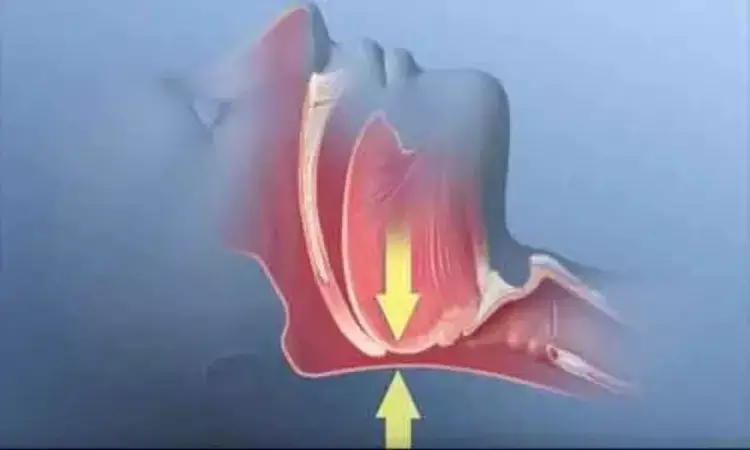- Home
- Medical news & Guidelines
- Anesthesiology
- Cardiology and CTVS
- Critical Care
- Dentistry
- Dermatology
- Diabetes and Endocrinology
- ENT
- Gastroenterology
- Medicine
- Nephrology
- Neurology
- Obstretics-Gynaecology
- Oncology
- Ophthalmology
- Orthopaedics
- Pediatrics-Neonatology
- Psychiatry
- Pulmonology
- Radiology
- Surgery
- Urology
- Laboratory Medicine
- Diet
- Nursing
- Paramedical
- Physiotherapy
- Health news
- Fact Check
- Bone Health Fact Check
- Brain Health Fact Check
- Cancer Related Fact Check
- Child Care Fact Check
- Dental and oral health fact check
- Diabetes and metabolic health fact check
- Diet and Nutrition Fact Check
- Eye and ENT Care Fact Check
- Fitness fact check
- Gut health fact check
- Heart health fact check
- Kidney health fact check
- Medical education fact check
- Men's health fact check
- Respiratory fact check
- Skin and hair care fact check
- Vaccine and Immunization fact check
- Women's health fact check
- AYUSH
- State News
- Andaman and Nicobar Islands
- Andhra Pradesh
- Arunachal Pradesh
- Assam
- Bihar
- Chandigarh
- Chattisgarh
- Dadra and Nagar Haveli
- Daman and Diu
- Delhi
- Goa
- Gujarat
- Haryana
- Himachal Pradesh
- Jammu & Kashmir
- Jharkhand
- Karnataka
- Kerala
- Ladakh
- Lakshadweep
- Madhya Pradesh
- Maharashtra
- Manipur
- Meghalaya
- Mizoram
- Nagaland
- Odisha
- Puducherry
- Punjab
- Rajasthan
- Sikkim
- Tamil Nadu
- Telangana
- Tripura
- Uttar Pradesh
- Uttrakhand
- West Bengal
- Medical Education
- Industry
Eye Scan May Help Detect and Predict Severity of Sleep Apnea, Study Finds

USA: A new study published in the Annals of the American Thoracic Society suggests that optical coherence tomography (OCT), a non-invasive eye imaging technique, could help predict both the presence and severity of obstructive sleep apnea (OSA).
The research, led by Dr. Maide Gözde İnam from the Department of Ophthalmology, Edward S. Harkness Eye Institute, Vagelos College of Physicians and Surgeons, Columbia University Irving Medical Center, New York, highlights the potential of eye-based imaging as a diagnostic tool for this common sleep disorder.
OSA, characterized by repeated interruptions in breathing during sleep, has long been known to affect the body’s microvascular system. Given this association, the researchers explored whether changes in the choroidal vasculature—the network of blood vessels beneath the retina—could reflect the presence and severity of OSA. Spectral domain optical coherence tomography (SD-OCT) was employed to capture detailed cross-sectional images of the choroid, enabling a deeper look into these vascular changes.
The study analyzed SD-OCT images from 120 individuals diagnosed with OSA. Participants were divided into four groups based on the severity of their condition, as defined by the apnea–hypopnea index. Using ImageJ/FIJI software developed by the National Institutes of Health, the team measured various choroidal biomarkers, including choroidal thickness, vascular indices, total choroidal area, and the luminal-to-stromal ratio. These parameters were compared among participants with varying degrees of OSA and those without the condition.
The key findings include the following:
- The presence and severity of obstructive sleep apnea were significantly associated with changes in the choroidal structure, particularly within the non-Haller’s layer.
- The thickness ratio between Haller’s and non-Haller’s layers showed a strong correlation with OSA severity, especially in the nasal region located 1000–2500 µm from the fovea.
- The nasal 2500 µm region exhibited the highest discriminative ability for identifying severe OSA, with an area under the curve (AUC) value of 0.733.
- Logistic regression analysis identified the Haller’s/non-Haller’s layer thickness ratio at the nasal 2500 µm region as the most significant predictor of severe OSA.
- This association remained significant after adjusting for age, sex, and comorbidities, with an odds ratio of 2.147.
According to the authors, these results indicate that OSA is associated with microvascular remodeling in the choroid, particularly on the nasal side of the fovea. This remodeling alters the balance between the vascular layers, increasing the thickness ratio of Haller’s to non-Haller’s layers—a potential imaging biomarker for disease severity.
"The study highlights the promise of SD-OCT as a non-invasive, accessible tool for identifying systemic vascular changes associated with OSA. By detecting subtle microvascular alterations, OCT imaging could support early diagnosis, assist in risk stratification, and help monitor disease progression in patients with obstructive sleep apnea," the authors concluded.
Reference:
İnam MG, İnam O, Lin JM, Park J, Gucer D, Tezel TH. Predicting the Presence and Severity of Obstructive Sleep Apnea with Optical Coherence Tomography. Ann Am Thorac Soc. 2025 Sep 30. doi: 10.1513/AnnalsATS.202506-579OC. Epub ahead of print. PMID: 41025935.
Dr Kamal Kant Kohli-MBBS, DTCD- a chest specialist with more than 30 years of practice and a flair for writing clinical articles, Dr Kamal Kant Kohli joined Medical Dialogues as a Chief Editor of Medical News. Besides writing articles, as an editor, he proofreads and verifies all the medical content published on Medical Dialogues including those coming from journals, studies,medical conferences,guidelines etc. Email: drkohli@medicaldialogues.in. Contact no. 011-43720751
Next Story


